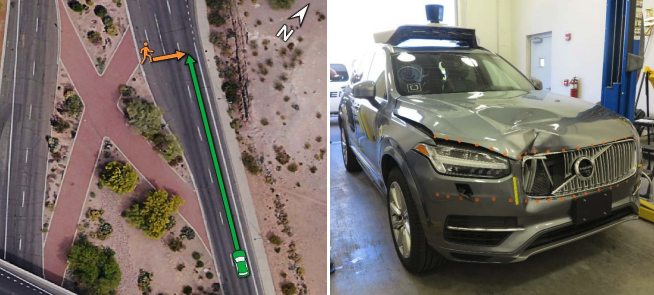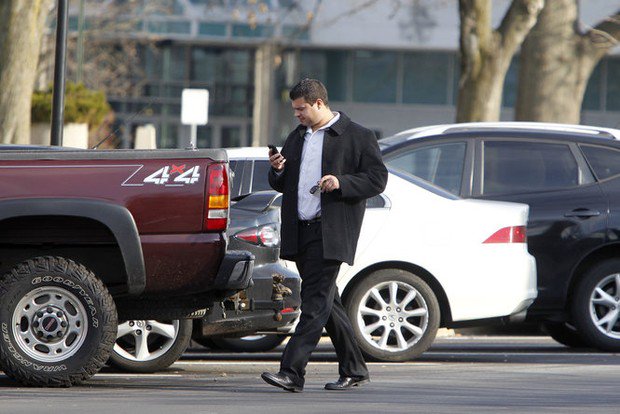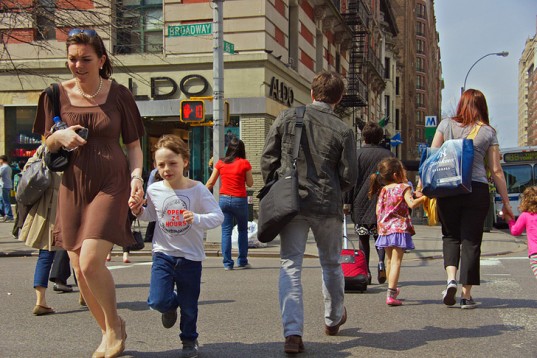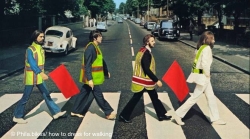
Recently, Walk Metro Vancouver participated in a CBC Radio “On The Coast” dialogue with CBC’s Michelle Eliot. Karen Reid Sidhu, Executive Director of the Surrey Crime Prevention Society, joined me in addressing motor vehicle speeds, and the question of why convenience is sometimes viewed as more important than reducing crashes, injury and death on our roads.
There are some organizations promoting the idea that vehicular speed has no impact on safe road use. For example, Sense BC ran a campaign against photo radar in British Columbia, which was implemented on highways in the 1990s to save lives. The program was disbanded, and as we reported in late 2016 deaths and injuries of vulnerable road users have increased in this province over much of the past decade.
Dr. Perry Kendall, recently retired as BC’s Provincial Medical Health Officer, has detailed the 280 annual deaths and injuries from vehicular crashes in his report Where the Rubber Meets the Road. Meanwhile, Sense BC is running a campaign today odiously entitled, “Speed Kills…Your Pocketbook.”
It’s people like Rod King MBE (that’s Member of the British Empire) who are focusing on saving lives by advocating for speed reduction in municipalities in the United Kingdom. King recently spoke to the Scottish Parliament in support of a bill proposed to lower speed limits to 20 miles per hour (equivalent to 30 km/h) in cities, towns and villages. That’s down from the current 30 miles per hour (50 km/h). It is being considered seriously.
In London and several counties across the UK, slowing speeds has resulted in twenty per cent fewer people dying, and many more avoiding serious injury. As King observes:
If we want consideration for the amenity and safety of residents and communities to be a national norm, then at some stage we have to enter a national debate about the quality of our streets and whether we have rules built around optimising the speed of vehicles, or about the liveability of people. We need to end our thinking about 30mph from our warm, protected, comfortable windscreen view of the street, and consider it from the height of an 8-year-old on the pavement, or with the mobility of an 80-year-old trying to cross the high street to a shop.
And here’s why:
- From an emissions standpoint, a vehicle going 50 km/h requires 2.25 times the energy to sustain a speed 50 km per hour, compared to 30 km/h. A speed reduction to 30 km/h reduces diesel NOx and PM10 pollution by 8 per cent.
- The stopping distance required for a vehicle at 50 km/h is nearly double that of a vehicle at 30 km/h. A speed reduction to 30 km/h doubles the available reaction time for everyone involved, increasing the likelihood of avoiding a crash.
- The force of a collision involving a vehicle driving 50 km/h is 2.25 times that of a collision at 30 km/h; 80 per cent of pedestrians will die in a 50 km/h impact. At 30 km/h, 85 per cent of pedestrians will survive an impact.
The World Health Organization and the European Union Transport & Tourism Committee both state that 30 km/h is best practice for road speed unless there are separated cycling and pedestrian facilities. Other organizations, like the International Road Assessment Program, and the Global Network for Road Safety Legislators, also recommend 30 km/h speed limits.
The International Transport Forum of the OECD (Organization of Economic Co-operation and Development) states: “Where motorised vehicles and vulnerable road users share the same space, such as in residential areas, 30 km/h is the recommended maximum.”
In the Netherlands 70 per cent of urban roads have a 30 km/h speed limit or lower. In Scandanavia, 30 km/h is the usual posted speed in towns and villages. In fact, throughout Europe, 30 km/h is increasingly being set as the standard, with the exception of arterial roads with segregated cycling facilities.
Slowing vehicles in municipalities not only about saves lives; it also allows the reimagining of schools, shops and services as places to walk or bike to, or simply to feel safer to congregate and recreate in, as eloquently expressed in an opinion piece in the Edmonton Journal last year by Anna Ho of Paths for People. Earlier this year this Globe and Mail editorial simply stated that Toronto vehicular traffic needs to slow, and that in order to reduce road deaths a huge cultural change must occur regarding ‘the need for speed’.
Slower speed limits challenges us to rethink our municipal fabric, and how it can serve people, and isolate the motor vehicle as an adjunct to, not a replacement for, social space.
It is a concept that is finally coming to fruition elsewhere in the world, and it’s time Canadian municipalities responded.

Image CBC.ca
























